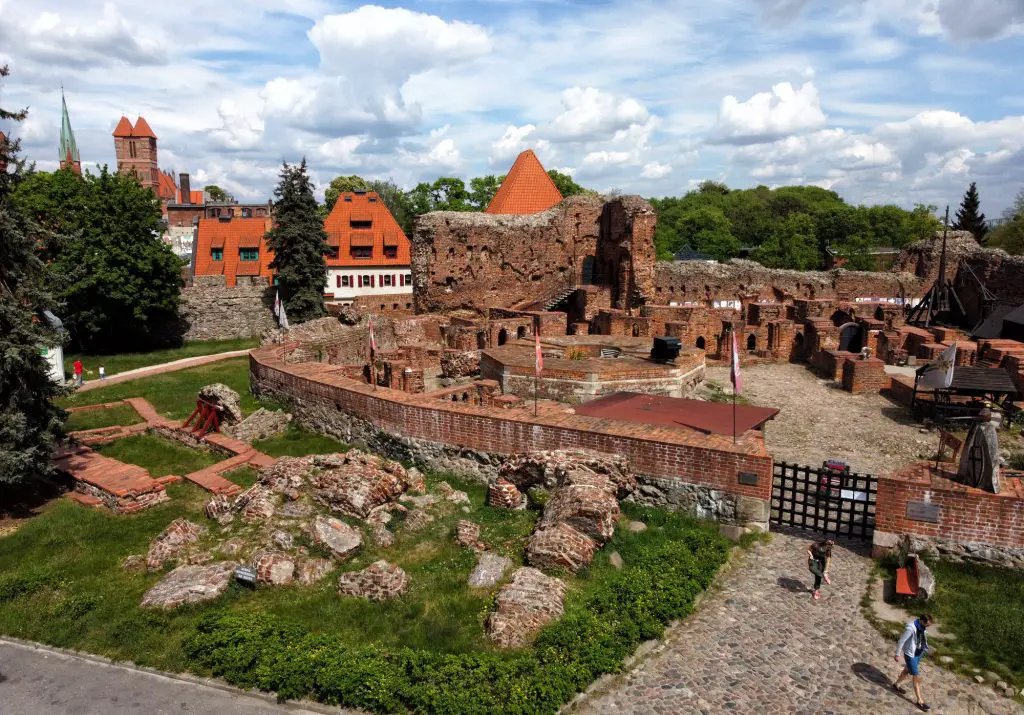The Castle of the Teutonic Order in Malbork, also known as Malbork Castle, is a stunning medieval fortress located in Malbork, Poland. This castle has an incredible history and remarkable architecture, showcasing the importance of the Teutonic Knights in the region.
Let’s delve into the story of Malbork Castle. The Teutonic Order, a medieval German military order, played a significant role in the Crusades and the Christianization of Prussia. They constructed various castles and fortresses throughout the Baltic region, and one of their most impressive creations is Malbork Castle.

The construction of Malbork Castle started in 1274, under the leadership of Heinrich von Strate, the Grand Master of the Teutonic Order. Over the years, the castle grew in size and complexity, becoming the central hub for the Teutonic Knights and their leaders. Its strategic location on the Nogat River made it an impenetrable fortress.
The architecture and design of Malbork Castle are truly remarkable. It blends Gothic, Romanesque, and Renaissance elements, resulting in a magnificent structure. The castle is divided into three main sections: the High Castle, the Middle Castle, and the Outer Bailey. The High Castle, surrounded by formidable defensive walls and towers, served as the primary residence for the Grand Masters.

Notable features of Malbork Castle include its grand courtyards, intricate vaulted ceilings, and beautifully adorned chapels. The Great Refectory, an expansive dining hall, and the Grand Master’s Palace showcase the opulence and grandeur of the Teutonic Order.
Malbork Castle played a crucial role in the defense and expansion of the Teutonic Knights’ territories. Its strategic position allowed the order to control trade routes and safeguard the borders of the Holy Roman Empire. Moreover, the castle holds immense cultural and historical significance, symbolizing the power and influence of the Teutonic Order during the Middle Ages. It is also one of the largest brick Gothic castles in the world.

Over the centuries, Malbork Castle faced numerous challenges, including wars, fires, and neglect. However, extensive restoration efforts have been undertaken to preserve its historical value and architectural integrity. Today, visitors can experience the castle in all its grandeur, thanks to meticulous restoration work.
Preserving historical landmarks like Malbork Castle is essential for maintaining our connection to the past and understanding the cultural heritage of a region. It allows future generations to appreciate the architectural achievements and historical importance of such extraordinary structures.
When visiting Malbork Castle, tourists can take guided tours that explore the castle’s chambers, courtyards, and exhibitions. Knowledgeable guides provide insights into the castle’s history, architecture, and the daily life of the Teutonic Knights. The castle houses vast collections of medieval artifacts, including weapons, armor, and religious art, offering a glimpse into the past.

Highlights for visitors include the impressive Grand Master’s Palace, the elegant Chapel of St. Anne, and the imposing Great Refectory. The castle’s picturesque surroundings and the nearby Nogat River provide a scenic backdrop for exploration and photography.
Today, Malbork Castle functions as a museum and a UNESCO World Heritage site. It attracts visitors from around the globe, providing a unique opportunity to step back in time and immerse oneself in the medieval world of the Teutonic Order. The castle also hosts cultural events, concerts, and reenactments, bringing its rich history to life.

In conclusion, Malbork Castle is a magnificent testament to the grandeur and influence of the Teutonic Order. Its awe-inspiring architecture, rich history, and cultural significance make it a must-visit destination for history enthusiasts, architecture lovers, and those seeking a glimpse into the medieval past.